HISTORIC ARCHIVE
ABOUT LITTON CHENEY





YOUTH HOSTEL
Litton Cheney hostel was requisitioned by the army on the outbreak of war up to the end of hostilities. For some time after D-
Day the premises were unoccupied, yet not de-requisitioned. When it was released in 1945 YHA were granted compensation
of £120, though with the South Coast Regional Group being short of funds and the building being in a state of disrepair it was
going to be difficult to resurrect.
Working parties were gathered and the hostel reopened on 23rd August 1947. Shortly after this date, MF Tighe, who oversaw
the considerable refurbishment, presented as a kind of dedication the following account of the neglect since 1939 and
remedial work undertaken by his West Dorset SubGroup team in 1947 to RFC Pascall, President of the South Coast
Regional Group and one of the initial adventurers who discovered the site:
A Report on the Redecoration and Reopening of the Youth Hostel, Litton Cheney, Dorset June-August 1947
When war broke out in 1939, the Hostel was immediately requisitioned for billeting troops. The equipment was removed to
other Hotels, and after requisitioning of Bridport Hostel in 1940 we were left completely without Hostels in West Dorset.
Judging by graffiti on the walls, there would seem to be very few units of the British Army (not to mention Americans) who
were not represented at Litton Cheney at some time during the War! The Hostel was finally released from requisitioning
during 1945.
In the meantime, however, Litton, which had had two very successful years of life as a Hostel before the War, seemed to
have been forgotten. The South Coast Regional Group had become fully committed with other projects elsewhere, and there
seemed to be little prospect of Litton reopening. As might be expected, the Army had left the premises in a most
unsatisfactory condition, and there were many who thought that the expense of rehabilitating the Hostel would outweigh its
use, especially owing to the short distance from Bridport, which was being developed as a large fully-controlled Hostel.
However, the West Dorset Sub-Group considered that it would be worthwhile going ahead with Litton, and in July 1946
prepared a report on the condition of the building. This report, signed by Mr J Bridle as Chairman, Miss C Flay as Secretary
and Mr L Shrimpton as Council Representative, envisaged a 30-bed hostel with a resident Warden, at an estimated cost of
£625 on constructional and redecorating work, and there can be little doubt that, if it had been practicable, a very fine hostel
would have resulted. The Regional Council, however, after much discussion, found itself unable to incur the extra expense.
There for the time being the matter lay. At the Annual General Meeting of the Sub-Group, in January 1947, a resolution was
passed unanimously, calling on the South Coast Region to endeavour to reopen Litton Cheney and make further
recommendations. This Sub-Committee, consisting of the Regional Secretary, Miss M Bray, and Messrs P le Breton, L
Shrimpton, MF Tighe and E Wilkins, met at Bridport on April 20th 1947, visiting Litton the following morning. It was at this
meeting that the lines upon which the Hostel finally reopened were decided. The general plan was for a 30 bed Hostel, for
self-cookers only, without a resident Warden, relying on the possibility of obtaining the services of someone in the village to
act as Warden. It was thought that Mrs Moxon would possibly be able to take the job on. A schedule of repair work was
prepared, and the Committee reported to the Regional Council, who then called for estimates.
The matter came up before the Regional Council once more at its meeting at Cranborne on June 7th 1947. It was decided
that the reopening of the Hostel be approved, and the details were left in the hands of the West Dorset Committee, subject to
a maximum expenditure of £200, certain objections on the grounds of sanitation and dilapidation having been answered
satisfactorily. From this point the time for argument had ended, and the responsibility lay in the local members to set the
Hostel on its feet once more.
The West Dorset Committee lost no time in getting down to the job. The week after the Council meeting they settled the
question of Wardenship with Mrs Moon, arranged for Mr Fry of Litton Cheney to carry out the necessary building work and
appointed the present author as Foreman of the Working Parties.
At first sight the job struck us all as almost more than we had bargained for. The plasterboard was nearly all broken down,
paint was peeling, the outside lavatories were in ruins, and the whole building gave an impression of dirt and decay. The
present cycle-shed had been left untouched apart from being cleaned out, and is a very fair example of the state of the whole
building in June 1947. In addition, the outside was overgrown with weeds, the ditch was choked, and the hedge reaching over
the walls.
Obviously, the structural repairs were the first to be put in hand, and Mr Fry started work immediately. This entailed the repair
of the outside lavatories, and installation of Elsan closets, the repair of a crack in the south-east wall, the replacement of over
half the plaster boarding of the interior walls, the reglazing of several windows and the cutting of two new ones, the entire
rewiring of the electrical system (the Army had left the old wiring hanging in festoons from the ceiling) and the installation of
two new sinks, with the necessary plumbing.
At this point tribute must be paid to Mr Fry for the manner in which this work was done. It was most refreshing, after
experience of other Hostels where building work had been held up for months, to find that here the job was done within three
weeks with no headaches of any kind. At the outset I prepared a programme of work, in which I made allowance for both bad
weather and delays on the part of the builder; thanks to Mr Fry and the Clerk of the Weather, this plan was never referred to
again.
For the first three weeks after work had started, there was little the Working Party could do, until the professional builders had
finished making their mess. A few of us busied ourselves clearing ditches, lopping hedges, and shifting the mountains of
rubbish lying around the place. The Interoven alone yielded a large bin full of sticks, rubble and soot.
By the end of June, matters had reached the stage where it was possible to bring over some spare bedding from Bridport
Hostel, and from then on, at least one member, usually more, spent Saturday night at the Hostel. Jack Bridle brought over
paint and distemper, together with step-ladders, planks and the remaining paraphernalia of his trade. Mr Fry stepped into the
breach with the loan of more brushes and of his ladders, and work started in earnest.
That first week-end we distempered the Men’s Dormitory and started the Women’s. The following weekend the distempering
was getting so well advanced that we even began to talk of an opening date – rather rashly, some of us thought, when we
looked at the shambles still prevailing, and the paint peeling off the roof, which still hadn’t been touches. However, we said
we would have it all done for August 23rd.
Towards the end of July the painting of the roof began. This was probably the most ambitious portion of the whole operation;
lines were passed across one side to the other, and the majority of the roof tackled from them – the lower portions, where the
camber was too steep to provide a foothold even with this help, were attacked from ladders, which often rested in peculiarly
unstable positions. On one occasion the attentions of a bull in the next field threatened to prove embarrassing to the peace of
mind of the painter whose ladder was resting in the hedge. We consider that this bull should be adopted as the Hostel
mascot, in preference to the dogs across the road.
By August Bank Holiday, we were beginning to see daylight. The working party turned out in force that weekend, and at one
time we were almost held up because we had more workers than we had tools or paint. However, everyone seemed to find
something to do somewhere.
Equipment was now becoming the chief headache. Some beds and bedding were surplus at Bridport, and others were sent
from Southampton, but even now we still have not our full complement of blankets and pillows. Furniture was almost
unobtainable, until Mr Wilkinson managed to find a few chairs and a table. A week or so later we were able to get more chairs
and tables, together with a very large dresser, at an auction in Bridport; with these, and crockery and so on bought locally, the
Hostel rapidly began to look a real home from home.
By this time members were beginning to drop in, Bridport was still not fully open, owing to various holdups, and surplus
travellers began to come to us. To their credit, they entered into the spirit of the game and wielded paint brushes, brooms and
pails with the best.
On Sunday, August 17th, the last of the painting was done, apart from one token piece to be left for the opening weekend.
This was the eighth consecutive weekend when members of the Working Party had been at Litton – in addition a bit of
midweek work had been done, and some of us had been over on odd days before. On a conservative estimate, something
like 450 manhours were given voluntarily by members of the Party – and Production per Man Hour was very high for amateur
labour.
The next weekend, the Hostel was officially reopened by the President of the South Coast Region, Mr RFG Pascall, and a
very successful opening party was held, at which the Hostel was filled for the first time since the war.
Even now there is still work to be done, but we hope to have everything completed for next season. Even now, we have all
been struck by the enthusiastic reception the Hostel has had from members since its reopening. May the YHA soon have
many more like it.
Mr Tighe concluded with an expression of thanks to:
Mr Fry, of Litton Cheney, for his help throughout.
Mrs Moxom, the Warden.
Mr Shave, of the ‘White Horse’ for his unfailing hospitality to the Working Party.
Jack Bridle, who obtained, mixed and transported a phenomenal amount of paint and distemper.
The inhabitants of the village of Litton Cheney, for the interest and courtesy they have extended to their new, and slightly
deranged, neighbours.

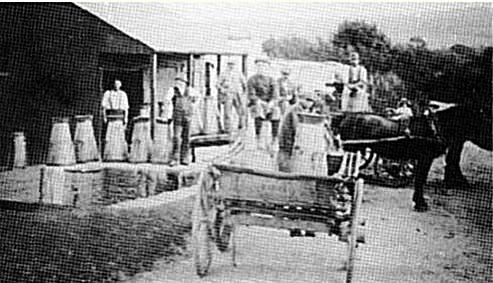


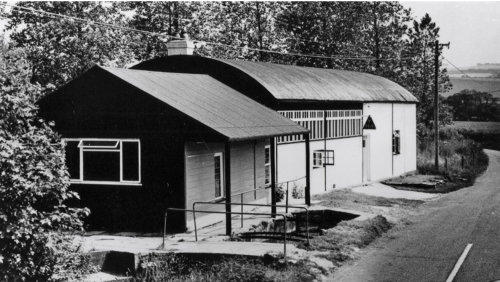
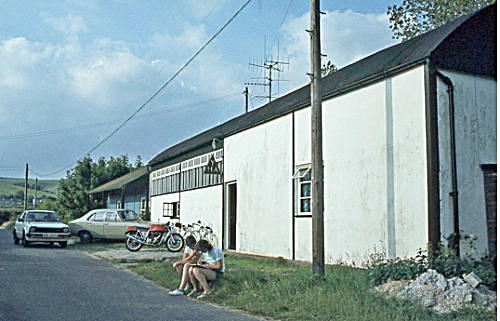
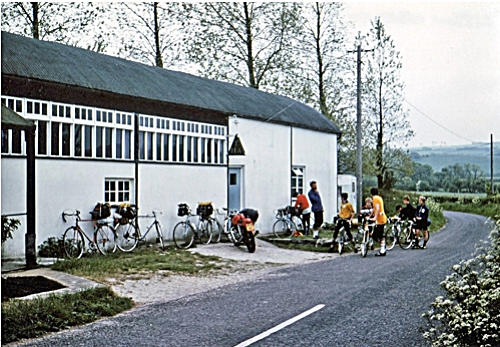
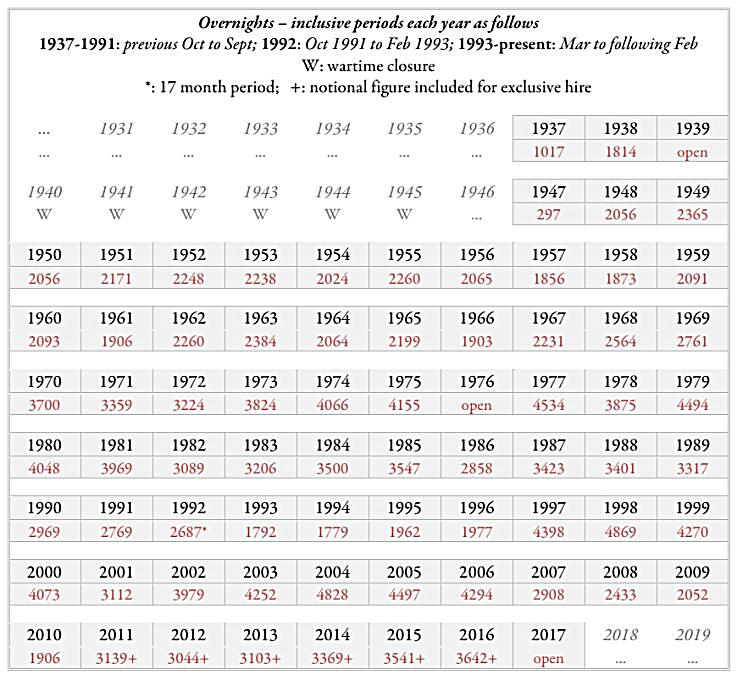
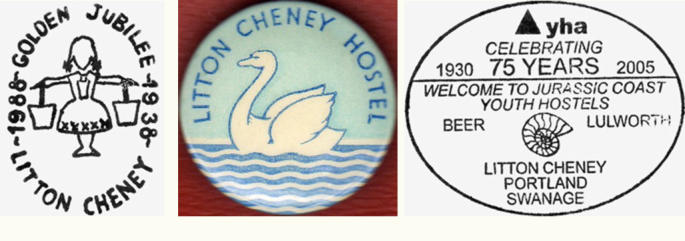
Lounge and Dining Area in 2018

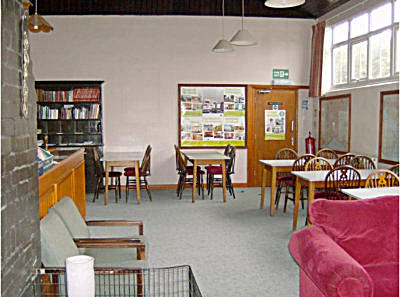
Hostel stamps and the one-inch pin badge
Occupation Record 1937-2016
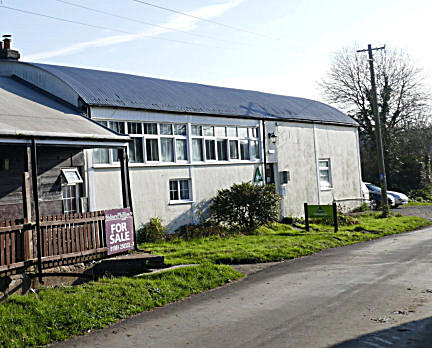
Hostel for Sale 2020
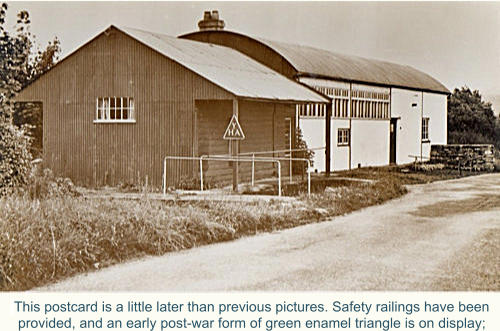
A later postcard, showing the enlarged end window, timber end wall and other refinements
In 1983 he age of motor vehicle touring had arrived
at Litton Cheney, though not yet the car park
A more traditional mode of hostelling, photographed about
the same time as the previous image.
The Hostel fwas sold in November 2022 for £232,000
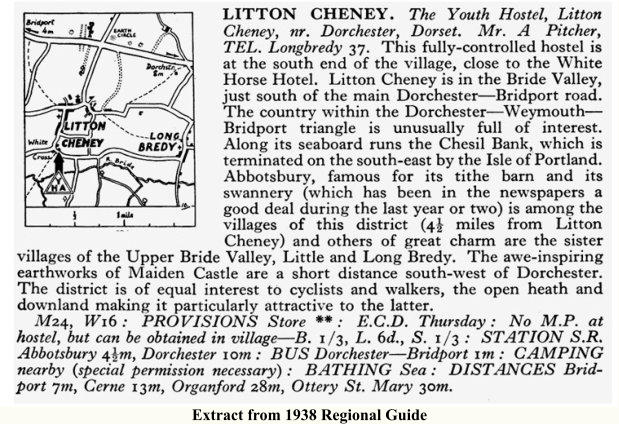
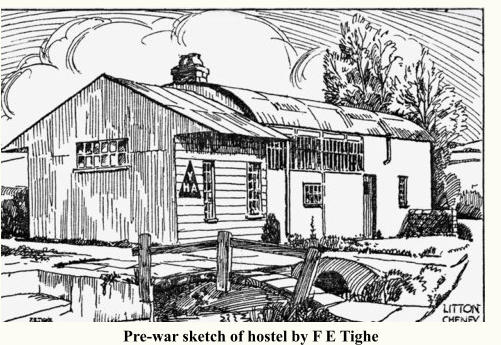
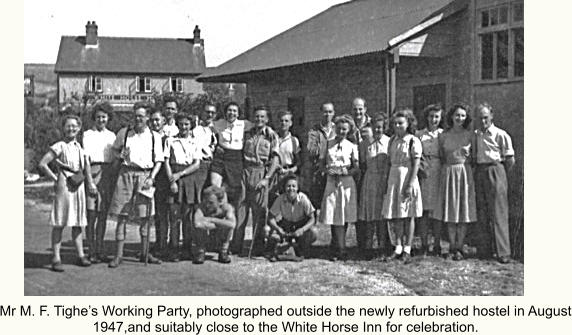
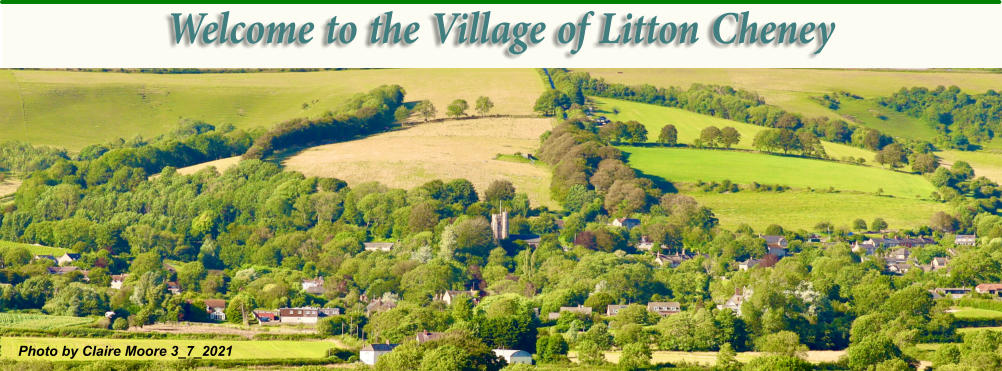









YHA (England and Wales)
Youth Hostel Profile compiled by the Association’s volunteer archivist, John Martin, 2018-01-01
Litton Cheney Youth Hostel 1937 to 1939, 1947 to present
White Cross, Litton Cheney, Dorchester, Dorset DT2 9AT
Litton Cheney youth hostel stands at a point at the south end of the village previously known as the Litton Sheep Wash, entirely
appropriately, as a tributary of the River Bride runs in a fast flowing channel here. The hostel, an industrial building entirely transformed,
was bought from United Dairies (Wholesale) Limited in the names of LA Rossiter and Others, representatives of the South Coast Regional
Group. It opened in May 1937.
Litton Cheney Hostel – Early History
The building was originally erected about 1919 as a Milk Factory making cheese. It was run by Cary and Grimsdell who also
had a butter factory in Dorchester. It could hold over one thousand cheeses maturing, with another two thousand in Fred
Pitcher's outhouse across the road at White Cross. Milk churns from the local farmsa were stood in the roadside stream to
cool.
The building was of simple construction: a large concrete raft, with brick walls and an iron roof. In its cheese factory days, the
building contained two rooms, whose floors sloped from all sides to one point against the wall to facilitate swilling down. The
whey was piped along Cox's Lane to be fed to pigs in a field known as Pig Plot.
Daniel (Dick) Hunt was the Factory Manager by 1921. Walter Darby and Rose Baker were cheese makers and Charles
Brown and Douglas Godding (from Puncknowle) were labourers.
In 1920 a report on the business noted it should be stated that the Dorchester Factory does not comprise the whole of the
firm's activities, as Messrs Cary and Grimsdell own the important cheese factory at Litton Cheney.
In 1922 Edgar Coombs, a smallholder of Long Bredy was summoned for selling milk, which was not of the nature and
substance demanded, it being alleged that it had been adulterated with nine per cent of added water. Mr Coombs said he had
a written contract with Messrs Cary & Grimsdell to take the whole of his milk delivered at the factory. Frederick Hansford of
Litton, cowman for Mr Coombs, said that he helped with the milking and loading and from first to last no water was put in the
churns. A fine of £5 was imposed.
Cary and Grimsdell won first prize at the Frome Show in 1924 for local cheeses, of any make except Stilton ,by makers, who
had not themselves taken a cheese prize at a show up to the date of entry. They were also very highly commended for the
best exhibit of a factory cheese, to be manufactured at and exhibited by a recognised cheese factory dealing with a minimum
of 500 gallons daily in the UK, for ten cheeses of not less than 28lbs each. At the Dairy Show in October at the Royal
Agricultural Hall, Islington, they were very highly commended for four Double Gloucester cheeses of between 26 and 30
pounds each. Mr Grimsdell also donated a cheese as a skittling prize for a garden fete held at the Rectory.
With the slump of 1930 the cheese factory closed, and the building was left completely derelict, with a couple of cheese
presses still inside. Around 1936 Youth Hostel Association members came to the Bride Valley in search of a suitable building
and discovered this site. It became the South Coast Regional Group's first freehold property in 1937 after its purchase from
United Dairies, being adapted for hostel use largely by the spare time work of local members. Charles Fry built the central
chimney stack serving an open fireplace on one side and an "interoven" for cooking on the other side.
When it opened in 1937 there were beds for eighteen men and fifteen women but the hostel was immediately popular and
had expanded by 1938 seemingly into the intended warden's space. Alfred Pitcher of White Cross was employed as a
caretaker warden, looking after the premises and collecting the overnight fees of one shilling per adult and six pence for the
under sixteens. Those wanting cooked meals were able to get them in the village. The new hostel had over a thousand
visitors during the first five months of 1938.
W. Aldred from Lancashire wrote a report of his cycle tour in 1938. “It was one of the finest places could possibly have been
turned into a youth hostel. There was a pleasant crowd, but who could help being pleasant in such comfortable surroundings.
The warden joined us around the fire and joined in our talks - and could he talk! I never met another like him. He never
stopped for two hours.”
The postcard reproduced above, posted in April 1950, is rare in the fact that it is of the warden’s home, Mrs Moxom’s, at 2 Grove
Cottages. Unusually for such a building, it shows (stylised) a YHA triangle. The cottage is some 600 yards north of the hostel, just
west of the village crossroads, and was apparently where hostellers could take meals before the war.
Mrs Moxom (nee Willcox) had been appointed as the new warden. Her husband Charles had recently left his job at Whiteheads
at Portland and was establishing himself as a motor engineer in the shed next to their cottage in Chalk Pit Lane. She obtained a
catering licence (not easy in those days of rationing) and started to provide meals for members.
Photograph by stalwart volunteer work-party member from Bristol, Fred Blampied, on 1st August 1949, shows a party of
young women to the rear of the hostel. No safety railings are in place, and the wooden-planked bridge over the leat seems
precarious. The end wall of the hostel is still clad in corrugated iron, and the exaggerated overhang is apparently buttressed
by only one support (nowadays there are three). YHA Volunteer David Greengrow has detected a hollow at the side of the
leat where an axle may have been journalled as part of a small apparatus to power dairy machinery in the nearer building in
its former life. The low wall to the right of the main building has since been demolished.
On 29 February 1952 the hostel came into the full ownership of the National YHA when the freehold of Land and Buildings at
Litton Cheney was transferred from LA Rossiter and Others to the Youth Hostels Trust.
Pat Packham was on a cycling tour in April 1964 when she encountered a crowded Litton Cheney hostel: “I had to sleep on a
camp-bed as the rest of the women’s beds were occupied by a school journey party”.
As for wardens, Mr Pitcher and Mrs Moxom of the early days have been mentioned; the meals arrangement with Mrs Moxom
lasted until 1951. From 1952 wardens were providing meals from the hostel, and a little camping was allowed for a time. By
1961, Mr D Sharman was in charge. Pete Chubb took the reigns the following year, and held them for a very long time – he was
still warden in the mid 1990s.
Duncan Simpson writes of him:
Pete Chubb was the manager there for many years. He operated a short order menu, long before anyone else dreamed of doing
so, on his own, with local foods, fish, lamb etc. He was a brilliant warden/manager. Pete lived in a room off the kitchen, and had
an outside toilet and bathroom.
Many also remember Pete for his relaxed dress sense. Philip Stacey recalls:
We only remember those wardens like the one at Litton Cheney who always wore tight leather shorts.
In 1996 Litton Cheney became a self-caterers’ hostel, reconfigured with smaller bedrooms, two at the north end (formerly the
female dorm) and four at the south (male), all with wash hand basins. The kitchen was modernised. The capacity was reduced to
24, and later 22, though the overnights doubled. General refurbishment was carried out at this time and most of the windows
were replaced with uPVC double glazing, replicating the original unusual fenestration pattern in the main section. The
refurbishment may have been spurred on by the closure of Bridport hostel. The warden’s quarters remained and have
subsequently been put to use for a volunteer manager.
Message on back of postcard “The warden’s house at Litton Cheney,
where we collected the key and went at 8.10am for breakfast.“
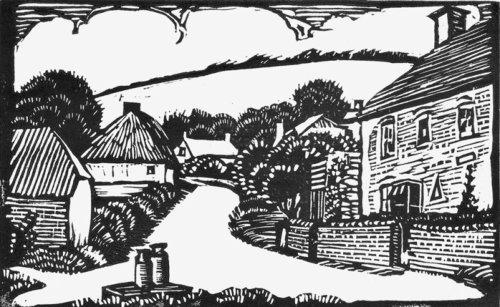
Picture on 1950 Postcard


























